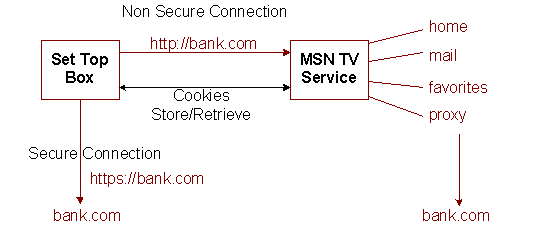
Secure Web sites are one of the most controversial subjects on the Web today. Users want to rest assured that their information is safe traveling across the Internet. That is why we support the 128-bit SSL encryption. But there are a few elements and behaviors involving secure pages that may be useful to understand.
Every Web page seen by one of our users passes through our service, for a number of reasons. The only exception to this is when the browser is using the https:// protocol. To maintain the integrity of a secure connection the receiver connects directly with the server in a secure situation. Keep in mind, this has a negative impact on page performance, in by-passing the server cache mechanisms.

In the preceding example, all of the transactions between the user and a fictitious site called bank.com go through our service%u2014that is, until a secure page is encountered, as indicated by the https:// protocol. In that case, the receiver and the secure server are directly connected and the service is not involved.
There are two ways a user can tell they are looking at a secure page: they see a Secure Page label in the title bar before the title, or the address uses the https:// protocol. We support versions 2 and 3 of SSL. The known trusted roots include:
The ciphers supported include:
If the TV browser cannot negotiate a supported certificate or cipher the user is prompted with a %u201CCould not establish secure communications%u201D message. Additionally, this error message appears when the site name and the certificate name do not match.
Client certificates and digital signatures are not supported.